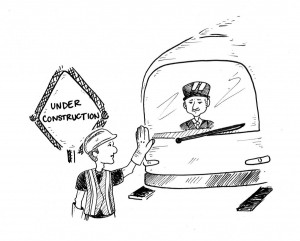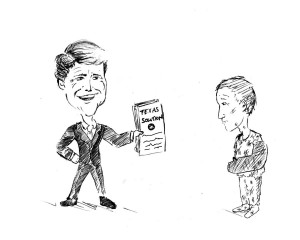There is the old, cliché saying: “What happens in Vegas stays in Vegas.” This directly applies to your computer or the Internet; what you post digitally stays there no matter what you do. Deleting photos of embarrassing or scandalous situations off your computer or taking off your Facebook profile are not permanent solutions.

Bloggers and hackers like the group Anonymous have become Internet vigilantes, digging up dirt to fight whatever they consider injustice. Anything posted on the Internet can be exposeed by talented hackers and diligent bloggers. | Wikimedia Commons
Take the infamous Steubenville, Ohio case in which two football players, Trent Mays, 17, and Ma’lik Richmond, 16, were found guilty of raping a drunken 16-year-old girl. The case would have remained only a local and state story had it not been for the Internet.
During the case, the blogosphere got involved, questioning the police giving the boys carte blanche treatment because of their status as football players on their highly regarded football team. Later, the famous hacker group, Anonymous, posted a video of a teen who made joking references to the rape, bringing the case to the national consciousness.
This case struck a chord with the nation because of how the youths treated the situation. There were witnesses who did nothing and others who posted pictures and videos on social media that made fun of the matter. Even the football coach in Steubenville is accused of covering up the football players’ crimes. The night and the events following were well documented with social media, phones, photos and videos. What you do on the Internet stays on the Internet; there is no “perma-delete.” A good hacker can find anything.
Speaking of that case, two Ohio girls have been arrested for making death threats against the accuser via social media. In cases of this high interest, it’s not wise to post something incriminating on the Internet. The police monitor Twitter and Facebook in a case like this.
Technology is an integrated part of our lives, and it is there to help us —for the most part. Anyone born after 1994 will never live through a time without being connected to the Internet from either his home or at school. However, those who remember the pre-Facebook or even pre-Myspace times can remember that there were still cases like the one in Steubenville that didn’t end with a conviction.
In a July 27, 2010 article by The Huffington Post’s Jim Gomez, suspected serial killer Mark Dizon was caught because he was a Facebook friend with one of his victim’s daughters. San Fernando, Calif. Police Senior Superintendent Danilo Bautista said Dizon “was fond of computers, and this gave him away.”
Cases like those are on the extreme side, and they don’t affect the majority of Americans, but they point to the ineptitude of handling social media in our lives. People take technology so lightly today that things that might be taken as cruel or unethical in life are treated cavalierly. The morals we hold in person are blurred under a veil of anonymous protection.
Ryan William Waterman, for example, posted pictures of petting, lifting and harassing a manatee listed on Facebook — doesn’t seem like such a bad thing until you find out that the U.S. Fish and Wildlife Service lists two species of manatee as endangered and a third species as threatened. The pictures caught the attention of authorities, and if convicted, Waterman faces a $500 fine and a possible 60 days in jail.
Some have been fired for what they have posted on Facebook. There was the case of Kelvin Colvin, an intern at a bank, who emailed his boss to tell him he’d have to miss work because of a family emergency and was later caught on Facebook when a picture of Colvin surfaced showed that the so-called “family emergency” was in fact a Halloween party. He posted a picture of himself in a fairy costume with a beer in one hand and a wand in the other. Their email transaction went viral on Gawker.
The case in Steubenville should be looked at for what it is — a horrible and inexcusable crime, and the young men involved deserved their convictions. It should be looked at also as a wake-up call for everyone on social media to be more responsible about what they post. Nothing is ever really deleted, and it could affect your work and personal life. What you post on the Internet stays on the Internet.
Alex Caballero is a creative writing senior and may be reached at opinion@thedailycougar.com.




